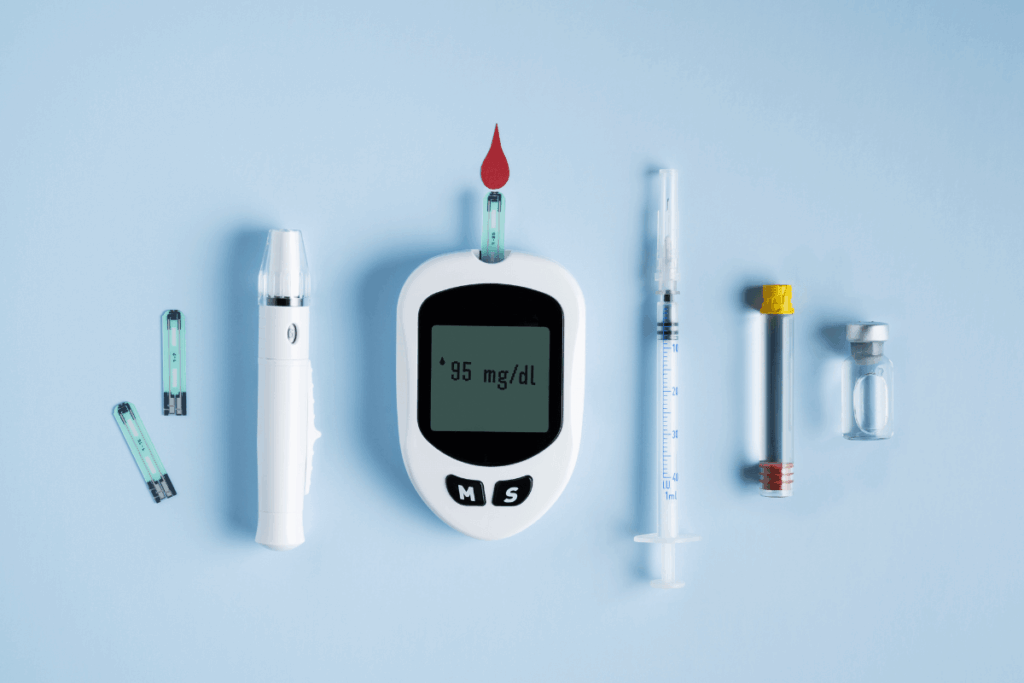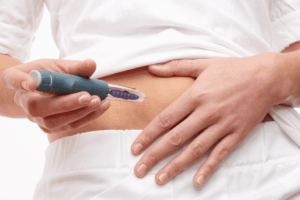
Transdermal delivery of biomacromolecules offers a convenient route for drug administration. This delivery avoids first-pass metabolism but remains challenging due to the skin barrier structure, including tight junctions and hydrophobic stratum corneum. Insulin still requires subcutaneous injections, which cause compliance and discomfort issues, whereas non-invasive approaches remain unsuccessful. Existing enhancement strategies like electrical devices, jet injections, chemical enhancers, microneedles, and ultrasound often compromise the integrity of the skin and require additional safety measures. A recent study published in Nature aimed to evaluate the ability of fast skin-permeable polyzwitterion poly[2-(N-oxide-N, N-dimethylamino)ethyl methacrylate] (PO) to penetrate the major skin barriers, including the viable epidermis, dermis, and stratum corneum. This study also determines whether PO can successfully reach systemic absorption/circulation following topical application.
Mouse embryonic fibroblasts (3T3-L1), HaCat, Cells expressing green fluorescent protein (HaCatGFP), mouse hepatoma (AML-12), and mouse skeletal muscle (MSMC) cell lines were used in this study. All cells were incubated in Dulbecco’s modified Eagle medium (DMEM) with 1% penicillin+streptomycin and 1% fetal bovine serum (FBS) at 5% CO2 and 37 °C. Female Sprague-Dawley rats (SD, age = 8-12 weeks, weight = 200g), male Guangxi Bama-minipigs (6 months, 35-40 kg), and male C57BL/6J mice (6-8 weeks, 25g) were included. All animals received the standard diet and controlled environmental conditions (50-70% humidity and 20-26 °C temperature). Skin permeation, biodistribution, cellular uptake, binding affinity, and insulin signaling were evaluated using rat, mice, minipig, and 3D skin models through enzyme-linked immunosorbent assay (ELISA), two-photon imaging, in vivo imaging system (IVIS), scanning transmission electron microscopy with energy dispersive spectroscopy (STEM-EDS), surface plasmon resonance (SPR), and confocal laser scanning microscopy (CLSM).
The skin permeability of OP was determined via topical application in C57BL/6J mice. CLSM analysis showed that OPCy5 penetrated through all skin layers within 4 hours, whereas control PEGCy5 remained on the skin surface. STEM-EDS confirmed the presence of OP-gold nanoparticles within the stratum corneum. OPCy5 entered the bloodstream within 30 minutes and reached peak levels at 2 hours. It was mainly accumulated in the lungs, liver, and kidneys. Similar penetration results were observed in minipig skin.
Functional delivery of OP was assessed by conjugating the insulin with OP (fluorescence-labelled conjugates). SPR analysis showed that native insulin and OP-insulin (OP-I) had similar receptor binding kinetics with comparable half-life (t1/2), dissociation rate constant (koff), dissociation constant (Kd), and association rate constant (Kon). Molecular dynamics simulations further confirmed that stable binding of OP-I at insulin receptor sites with binding energies close to native insulin. After intravenous injection, conjugate OP-I showed a slightly longer t1/2 (15-20 min) compared to native insulin (5-10 min), mainly because of plasma-protein interactions. In a 3D skin-equivalent EpiKutis model, CLSM analysis revealed that OP-I rapidly penetrated the skin epidermis layer within 30 minutes, showing higher permeability and higher flux (0.50 ± 0.12 μg cm−2 h−1) compared to native insulin and PEG-I.
Topical OP-I produced rapid and sustained increases in plasma insulin and effectively lowered the blood glucose levels in diabetic minipigs and mice compared with topical insulin and PEG-I, as well as subcutaneous insulin. OP-I accumulated in metabolic tissues, activated insulin signaling, and showed dose-dependent glycaemic control without causing systemic toxicity and skin irritation. Mechanistic studies demonstrated that OP-I diffuses across the stratum corneum lipid membrane and is transferred intercellularly through a membrane-mediated mechanism.
In conclusion, this study highlights that a non-invasive OP-based transdermal system delivers insulin with hypoglycaemic efficacy comparable to subcutaneous injections for the treatment of diabetes. OP enables efficient skin permeation and versatile delivery of nucleic acids, peptides, and proteins, supporting broad therapeutic applications.
Reference: Wei Q, He Z, Li Z, et al. A skin-permeable polymer for non-invasive transdermal insulin delivery. Nature. 2025. doi:10.1038/s41586-025-09729-x












